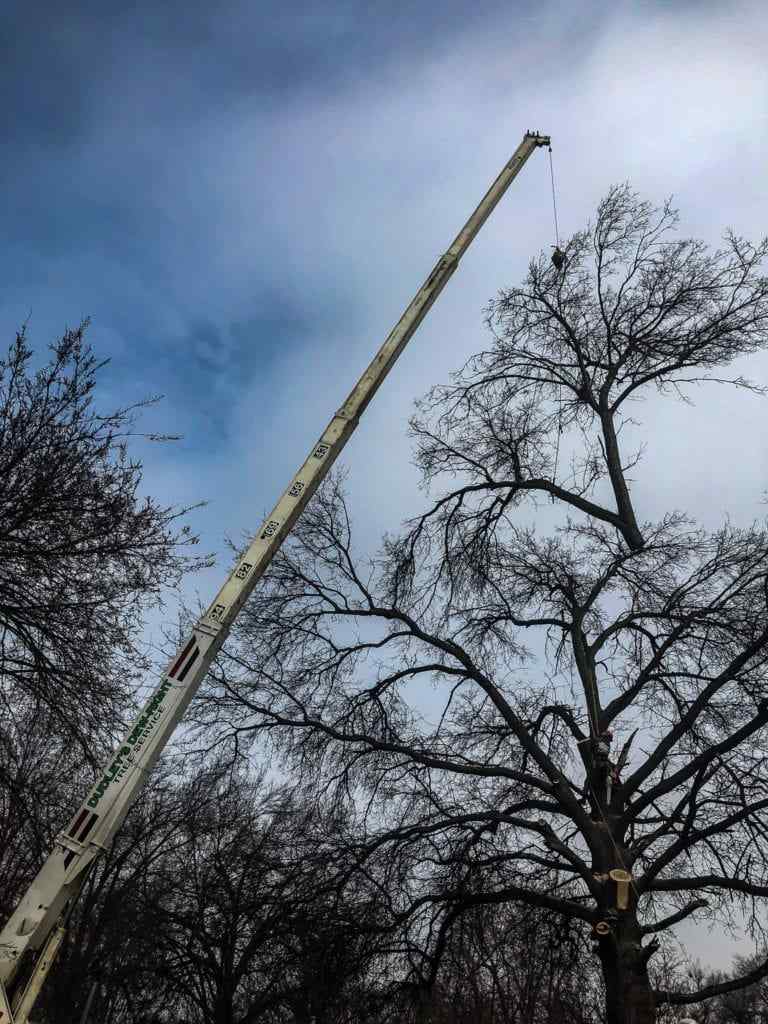
Baby it’s cold outside…but remember to care for your trees!
Snow has fallen, icy mist covers the branches of your gorgeous trees. The weight is too much for the limbs to handle. Snap! There go your branches. Just because it’s cold outside doesn’t mean you should stop caring for your trees. Here are a few tips from TreeHelp.com to assist you in cold weather tree care!
Besides snow and ice, the cold weather itself takes a toll on trees. Cold stress can take many different forms. Daytime heat and nighttime freezing can stress out mature trees. According to TreeHelp.com, temperature variations may lead to stresses between the outer and inner bark of the tree, causing cracks called frost cracking or southwest injury.
Unfortunately, not much can be done to prevent this frost cracking. In many cases, however, the tree is able to repair itself, but the cracked area remains vulnerable and repetitive cracking in the same place may cause major damage to the tree. If your young trees are at risk, TreeHelp.com recommends wrapping the bark as part of a fall maintenance procedure.
Another cold stress on trees is a sudden early frost on late growth. Tree growth late in the season is more vulnerable because it doesn’t have the same amount of time to adjust to the cold as established growth, according to TreeHealth.com. “Ice crystals can rupture the cell walls on the new tips of branches leading to die off the following season,” the site said.
In order to avoid this situation, TreeHelp.com urges you to avoid pruning until after your trees have gone into dormancy for the fall. “Pruning too soon might encourage new growth and increase the risk of frost damage,” said the site. TreeHelp.com also says to avoid using fertilizers with amounts of quick-release nitrogen. However, trees can definitely benefit from proper fall fertilization. Give Dudley Dew Right a call to help you with your winter fertilization needs!
The second cold weather tree problem is winter drought. This occurs when trees lose more water than they can absorb from frozen ground, and occurs more often in early spring when the ground is still frozen and the spring sun starts warming the rest of the tree. Windy conditions, especially present in Nebraska, may worsen the problem.
According to TreeHelp.com, there is no sure fire way to help with winter drought, but you may be able to control the problem by spreading a thick layer of mulch around the base of your trees in late fall. Again, give us at Dudley’s a call, and we’ll be glad to help you.
Branch breakage is another common winter tree health problem. Due to the cold weather, branches are more vulnerable to breakage in the winter. In deciduous trees, according to TreeHealth.com, the wood hardens and becomes a little more brittle and susceptible to wind damage. This problem, mixed with ice and snow, can affect deciduous and evergreens alike.
How do you care for this problem? Good fall tree maintainence is the solution, and Dudley’s is more than willing to be there for you when it comes time to prune your trees. Another solution for very small trees and shrubs is to cover the entire tree with a tent-like housing. For larger evergreens, consider using rope to tie and reinforce branches before the heavy snow and ice falls.
Rodents are another winter tree problem. Trees may become targets for rodents looking for food. Deer, mice and rabbits are the main culprits, according to TreeHelp.com. Mice and rabbits chew bark and girdle trees. Squirrels may also become a winter tree problem.
To guard against these rodents, TreeHelp.com states the following:
For mice, leave a space between the mulch and trunk of the tree and check frequently. If they continue to be a problem, think about setting out bait, following package directions carefully. Rabbits, on the other hand, can be deterred by wire mesh enclosures, and commercial paint-on repellents may also be available. Contact us today for options!
